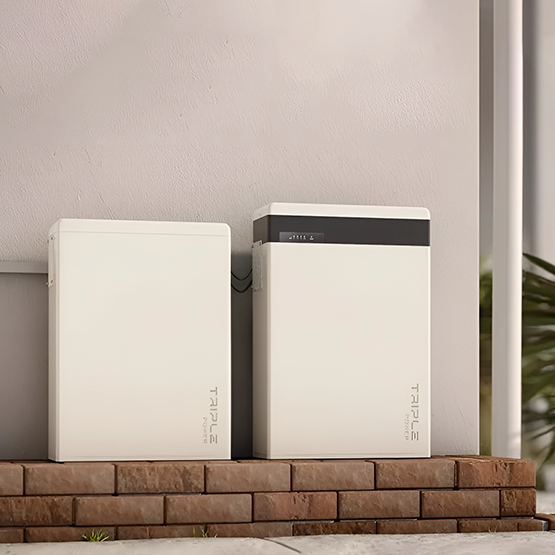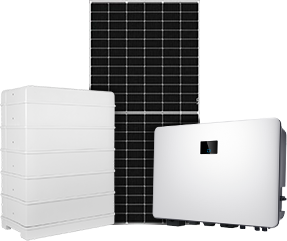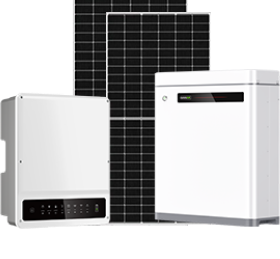As solar battery storage systems become more popular, many homeowners want to add batteries to their existing solar panel systems. Solar batteries are especially appealing in areas with an unstable electric grid, such as areas regularly impacted by severe weather. Due to the utility rate structure in some areas, some homeowners can reduce their electric bills more with a battery. Let’s explore this topic so you can better serve your existing customers.

Can I Add a Battery To An Existing Solar System?
Yes, it is possible to retrofit existing systems with a solar battery bank. This is an excellent way to reduce the impact of power outages by making solar electricity available 24/7. Techno Solar Australia can help to install solar battery storage.
Solar panels are almost always compatible with energy storage systems. However, if the solar system wasn’t originally designed to have solar battery backup, you will need to either replace the existing solar inverter or install an AC-coupled battery.
Why Add Batteries to a Solar System?
Adding batteries to a solar system enables energy storage, allowing users to store excess solar energy for later use or power outages. Solar panel batteries address fluctuations in energy production and consumption, providing a reliable power source during periods without sunlight or blackouts. The primary motivation for adding solar batteries is to increase self-sufficiency and reduce reliance on the utility grid for both residential and commercial applications. Call Techno Solar for best solar battery system installation.
Considerations For Adding to a Solar System
Before you plan your approach to retrofit batteries to a solar system, it’s essential to consider several factors.
What Type of Solar Inverter Does the Array Currently Use?
Unless a solar system was designed to have battery storage, you would either need to replace the inverter or install an AC-coupled solar battery, such as the Tesla Powerwall AC-coupled battery. These types of batteries have a storage inverter built into the battery, so they can work with both microinverters or a standard string inverter.
However, some homeowners knew they would want to add a battery in the future and installed a storage-ready solar system with a hybrid inverter, such as the SolarEdge Storage. In these cases, they can pair a DC-coupled battery with their system, but this situation is rare.
It’s also worth considering the expected remaining lifespan of the existing inverter. For example, many string inverters have a lifespan of 10 to 15 years. So, if the equipment is already 10 years old, it might be better to replace the inverter with a hybrid inverter and go with a DC-coupled solution.
Is The Solar System AC- Or DC-Coupled?
An AC-coupled system with batteries has two separate inverters. One inverter converts the direct current (DC) power from the solar panels to alternating current (AC) power. This energy can power the house, and the excess can go to the electric grid. The other inverter works with the battery, which stores DC power.
By contrast, a DC-coupled system has a hybrid inverter that can invert current from both the solar panels and the battery. This option allows the DC current from the solar panels to directly charge the batteries. When feeding energy from the battery to the home or the power grid, it can also convert DC power to AC.
If you install an AC-coupled battery and keep the existing inverter, the upfront cost would likely be lower, but the system could be a bit less efficient. In the long run, this could add up. If your customer wants to keep their costs down, it is probably the better option because they won’t have the added expense of replacing the inverter.
However, a DC-coupled solar system is a good choice if they are more concerned about system efficiency. With a DC-coupled system, the solar panels can charge the batteries directly without converting the power, reducing inefficiencies.

Solar Panel Battery Capacity Needs
Properly sizing the battery storage capacity is essential, so start by considering how your customer wants to use the stored energy. For example, some homeowners just want emergency power during outages, while others want whole-house backup power.
Unfortunately, whole house backup can be very costly, especially if they have big loads, such as air conditioners, electric heating, or a hot tub. For this reason, most off-grid systems don’t usually have many big electrical loads, or the homeowners use them very sparingly.
To size the battery storage system, determine their household loads and how frequently they need to run them. Most smaller battery systems can handle relatively light loads, such as a refrigerator, the electrical components on a furnace, some lights, a Wi-Fi router, and a few electronics, but will get depleted quickly by power-hungry devices.
Customer Expectations Regarding Adding Solar Battery Backup
It is critical to gauge your customers’ expectations on how much electricity the batteries can supply during an outage. It might not be possible to run electric water heaters, electric clothes dryers, heat pumps, air conditioners, power tools, or electric ranges without multiple batteries. Solar installers usually add a critical load panel to prioritize the most important loads.
Financial Savings from Adding Solar Battery Storage
If your customer lives in an area with time-of-use (TOU) rates and net metering, they can save even more by installing a battery and drawing from it when rates are highest. In areas with TOU rates, the cost of power is usually higher in the late afternoon and early evening and lowest in the middle of the night. Likewise, electricity might cost more per kWh in the summer than in the winter. Techno solar can help you to calculate your energy needs and guide you for best solar battery system.
Some residential customers might also receive demand charges in addition to time-of-use rates. With both demand chargers and time-of-use rates, solar batteries will help your customers lower their electricity bills by using stored power when electricity is the most expensive.
How Much Does It Cost To Add a Battery to a Solar System?
Adding a residential solar battery storage system can easily cost $10,000 to $20,000. It can be more expensive if the customer needs more than one solar panel battery and they must replace their existing inverter. Usually, the cost of one solar battery installation with a ten or 13-kWh capacity starts at around $13,000, including labour. Techno solar qualified staff can help to set up best solar battery system.

How To Add a Battery to a Solar System
Adding a solar battery to an existing PV system involves several steps.
Evaluate Solar Energy Storage Needs
- Determine your client's energy storage needs. Consider factors like daily energy consumption, desired backup duration during outages, and energy independence goals.
- Choose a compatible battery storage system based on your client's energy needs and budget. Common types include lithium-ion batteries, such as those using lithium iron phosphate (LiFePO4) chemistry.
- Ensure the existing inverter is compatible with adding a battery to the solar system. Some inverters are designed to manage both solar power and battery storage.
Install the Solar Panel Battery System
Follow the manufacturer's instructions to add the battery to the solar system. This involves connecting the battery to the inverter and configuring the system for proper operation.
Upgrade or Add a Solar Inverter
If your existing inverter is incompatible with the solar battery, you may need to upgrade it or add a separate inverter dedicated to the battery system.
Reconfigure Solar Wiring
Modify the wiring as necessary to accommodate the new solar battery installation. This may involve adding a separate circuit or reconfiguring existing connections.
Program and Configure
Program the system to operate in conjunction with the solar panels. Configure settings for charging and discharging the battery based on your preferences and energy needs. If the utility company has time-of-use rates, take this into account.
Test and Monitor Solar PV System
Test the system now that the batteries are connected to ensure proper functionality. Set up monitoring tools to track the performance of both the solar panels and the battery storage system.
Can I Use Solar Panels Without a Solar Battery?
Yes, you can use solar panels without an energy storage battery. In a grid-tied solar power system without energy storage, the solar panels generate electricity when the sun is shining, and this electricity is immediately consumed in the home or fed back into the power grid. When solar panels produce more electricity than the home is using, the excess can be sent back to the grid, often earning solar credits or compensation through net metering programs. This setup doesn't require a battery for energy storage.
However, a solar power system with a solar battery allows homes to store excess energy generated during the day for use at night or on cloudy days. Adding a battery to a solar system provides backup power and increases the ability to use solar energy when the sun is not available.
Adding a Battery to a Solar System Could Be Right For Your Clients
Severe weather is becoming more common, causing blackouts to be more common. Due to falling solar battery prices and more energy storage incentives, many homeowners with solar systems want to add backup energy storage. Although this is certainly possible, proper planning and knowledge are critical.
Our Solar System Packages


Why Choose Techno Solar?




Retailer




Support






Owned




Installer




Council Member
Battery Buyer's Guide




